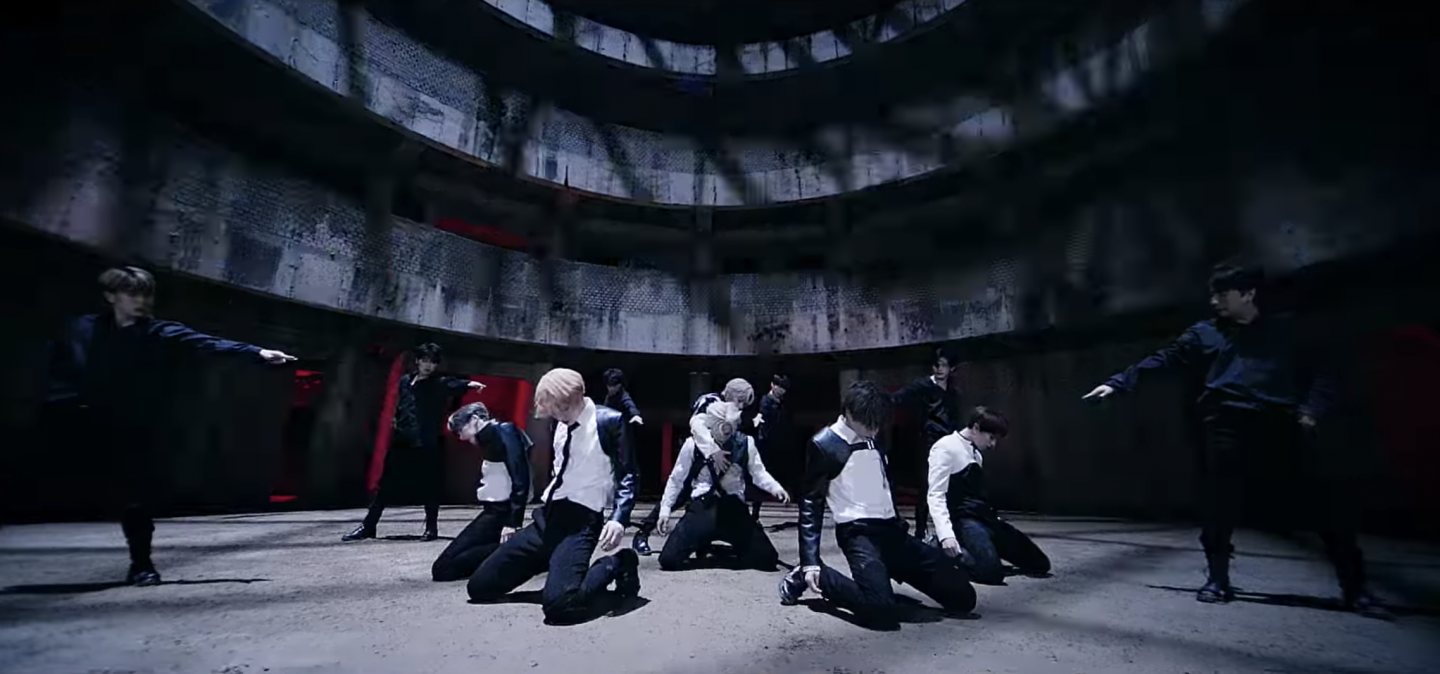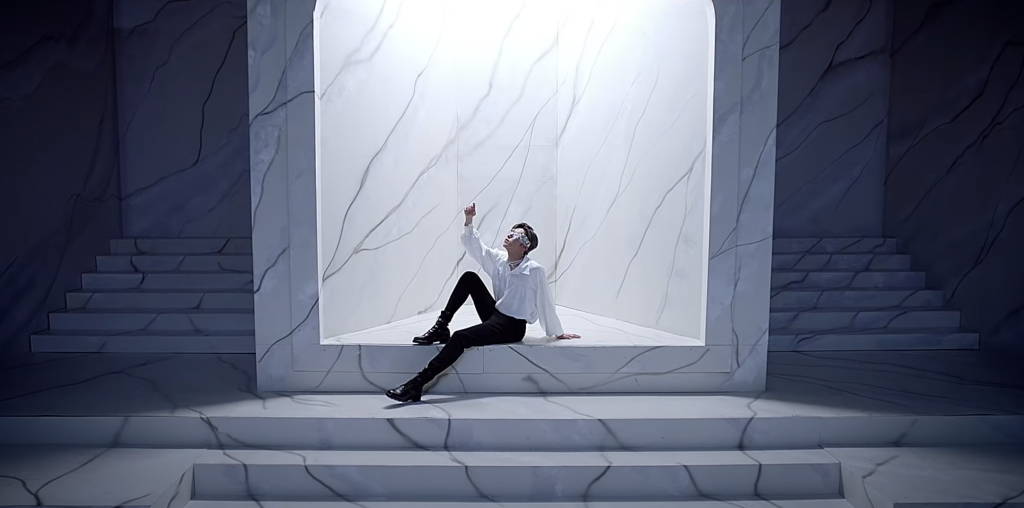
Regarding Oneus, I’ve come to realize how often we’re following up with this rising group — indeed, consistent reviews have shed positive light on their signature sound that sharpens with every comeback. From their debut with “Valkyrie” to following releases — “Twilight,” “Lit,” and “A Song Written Easily” — Oneus never fails to impress with their polished performances, aesthetic MV productions, and spellbinding concepts.
Their releases consistently touch on a subtly classic, even regal theme. Beyond the beautiful production sets — Italy, New Zealand, etc — it’s worth noting that everything from silky attire to elegant concepts have the boys reflect a regal role. While every release has touched on a different facet of love: from celebration to angst to nostalgia, Oneus has maintained the appearance and storyline of beautiful boys searching for their past fulfillment within nature, from flowers to the sun. While not always explicitly stated or implied, visual hints have pushed forward a kind of mood for the group maintained with every MV. Most concepts directly involve the role of monarchs amidst a royal setting (among both visual and storyline MV’s). With every comeback boosting the group’s overall standard, fans may have been curious as to how they’d maintain their theme.
We have to look no further than the past! Oneus switched things up this time around by heavily referring to a timeless literary classic, Hamlet. While the play can be noted for its take on the idea of love, the group has more so utilized its main message on life and death. The lyrics expand on the metaphor of a past lover symbolizing pain and death, while letting her go — another tough choice — will ultimately bring life. The song’s title, then, directly pinpoints the core dilemma: “to be or not to be” meaning “to live or to die,” also meaning “to let her go, or to die in her memory.”
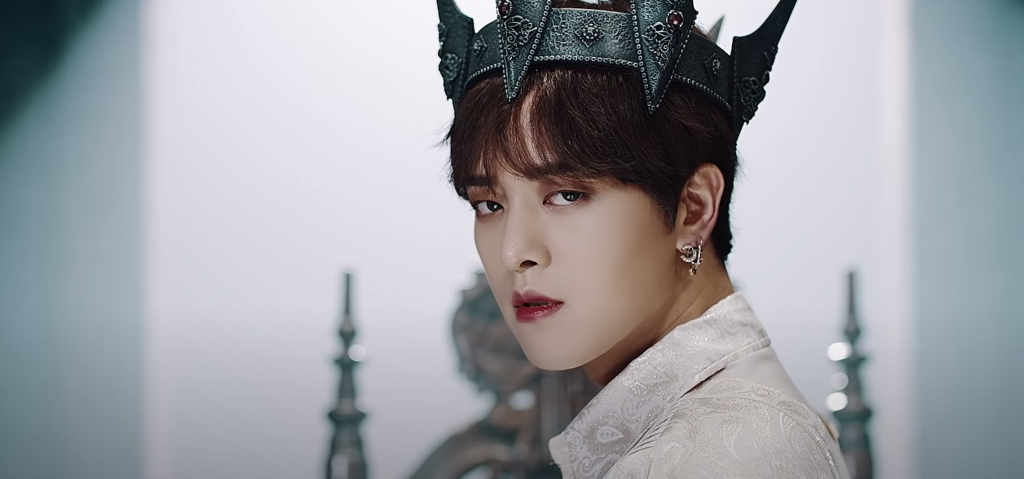
The title can reference something different for the plot, considering it’s a continuation of what evolved in their “Come Back Home” music video. Based on the two story films released prior, the MV strays from elaborating on love and heartbreak like the song. Rather, the MV relies more on dark fantasy and mythology. Fittingly, the members take up the role of monarchs who, by this point, have been sacrificed by humans to satiate Helios’ jealousy of their worship. The monarchs have kept themselves apart from humans despite their newly cursed thirst for blood, drinking only from evil. But, a war against the six monarchs and servants have ensued in debate on whether to preserve or sacrifice humans.
Or rather, just one human — a child that the monarchs declare to protect. The two story films briefly elaborate on the process of how the necklace seen in the MV preserves humans’ and the monarch’s souls. But, Helios is triggered again due to the loss of his son and bestows the worst curse on them, as well as being asleep for 100 years. On this note, “To Be or Not To Be” begins with the members waking up and struggling to defy the curse that’ll warrant them to kill the very child they need to protect.
Note: This MV may not be suited for those uncomfortable with scenes of blood, choking, guns, or violence.
All very gruesome but also insanely creative and theatrical. Through referencing Hamlet, Oneus has created two stories: one on love, the other on death. To bring some background into the Shakespearean play, it features Hamlet, the Prince of Denmark, as the tragic main character. In a nutshell, Prince Hamlet is in a state of mourning for the death of his father (the King of Denmark), when he is notified by a close friend that the king’s spirit is alive and haunting. Confronting the spirit himself to hear the truth behind his death, Hamlet promises to avenge his father for the murder committed by his uncle, the new king. In order to do so, he pretends madness — until it no longer becomes a lie.
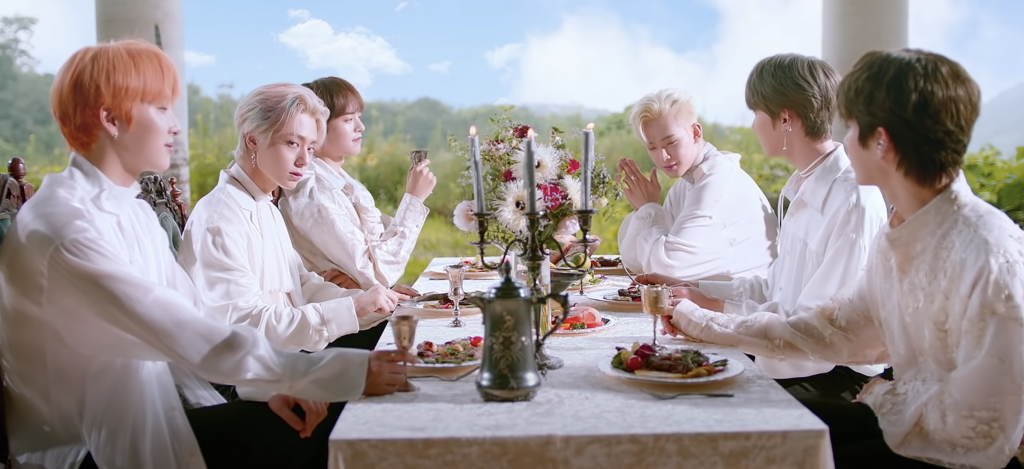
Not to leave behind spoilers, but multiple people end up in death, for multiple reasons: fear for their life, heartbreak enhanced by despair, and just pure bad luck that can go under the cloak of vengeance…or karma. Any hint of love is twisted due to the characters’ own selfish ambitions, and simultaneously Hamlet often reflects on the irony of life and death. This is where the infamous starting line “to be or not to be” comes in as the introduction to his soliloquy, lamenting the hopelessness behind life, but fearing the mystery behind death. According to Hamlet, to attempt death is a powerful way to defy life’s trials and be free — but at what cost, and with what energy? Life is needed for death, but his great question allows for only one answer.
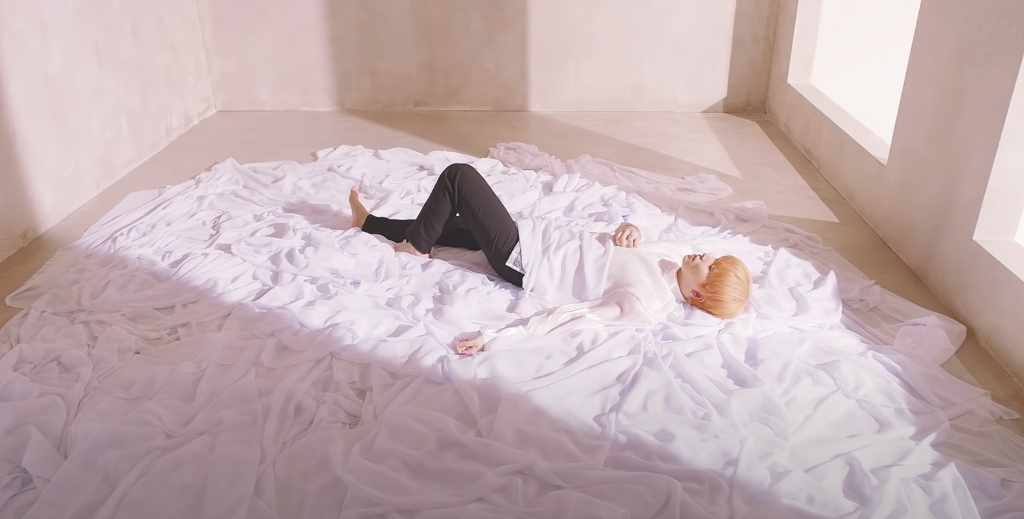
On that note, what Oneus has invoked through this song is this very question: to live, while (theoretically) killing a past lover, or to fail to kill and suffer from the consequences in return. There is a unique duality that is present, as Oneus debates whose life will have to be “snuffed out.” Whose life will weigh more, has greater priority, and provide a greater reward for the strength needed to attain that outcome? There is still love, vengeance, and murder involved, but in a different angle than the play: self versus lover, as opposed to self versus murderer. Throughout the MV, then, Oneus finds their way to a desired answer — which, presumably, is to die to their former self. By the end of the MV, they get their hands on a new kind of power, which has them embrace a new kind of darkness. The ending is open for interpretation, though the contrast between the start and end of the MV speaks for itself on the purity that they come to lose. This then brings the question, what exactly did they gain from having forfeited their former suffering?
Overall, the song is very poetic and blunt in talking about the traumatic pain that a relationship has caused. The ultimate question keeps raging throughout as well, as the dilemma between death versus life, past versus present is consistently mentioned:
You are the one I regret the most in my life
(Dead) And the happiest moment too
Dead Or Alive
I’m gonna cut you off
I gotta kill you in my heart to live again
TO BE OR NOT TO BE
There’s plenty of heart-wrenching juxtaposition here, as memories of their lover brings both light and poison. And it’s to the degree where they must choose between forfeiting the past happiness for themselves, versus dying to keep them. Ultimately, however, the song ends with a lack of closure, as Oneus ends with the question: “Answer me dead or alive / There’s only one choice.” Although, it’s debatable as to whom Oneus is exactly addressing — in other words, whether the choice is up to themselves or their lover.
This same contrast is reflected in Hamlet’s indecision throughout the play: to act on vengeance for his father, or to commit a grave sin. To ultimately bring worse fare towards the one who deserves it, or towards himself for the sake of obedience. Especially considering that said character may not remain the same after the sin is committed. Thus, Oneus and their creative team struck a unique balance with the play, in accordance with their own concept, bringing forth a distinct production of their own.
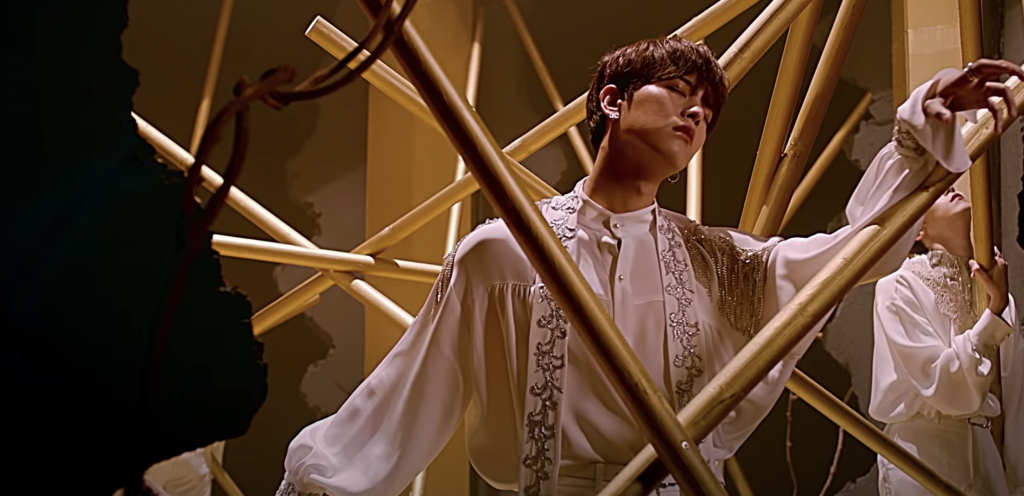
Visually, the bold MV brings the song and its reference to life. The beginning shows the boys in a royal setting, supposedly smiling and enjoying each other’s company. However, the essence of the story is brought to light with conflicting settings that sway between violence and peace. Beyond using color to indicate an idea, the settings utilize lighting and mood to create a more sinister background. The color spectrum is limited, while textures such as marble and stone contribute to a cold atmosphere. Not to mention the frequent traces of blood that signify death and corruption. It was rather surprising to see idols portray such a dark MV, but they emoted every bit of the darkness that is implied from the song with conviction. Their performance aspects are worthy of mention here, as it wouldn’t have been easy to act out some of the more intense scenes. There’s subtle tension held until the end to see where this slow but sure spiral into darkness progresses — until the necklace and crown are received.
“To Be or Not To Be” is a creative version of the literary classic that we’ve known since we were young. It’s a fresh take on visual storytelling, by intertwining the portrayal of romantic angst and pain through the theme of Hamlet, another well-established play on heartbreak, revenge, and death. While literary angles in K-pop are more and more common, it’s still a pleasant surprise to see two such different fields merge together into a new creative work. Oneus shows no end to their growing potential, even if it’s only been two years since their debut.
To our readers, what did you think of Oneus’ latest comeback? Leave comments below to let us know your thoughts!
(No Sweat Shakespeare, YouTube; Images via RBW Entertainment)
